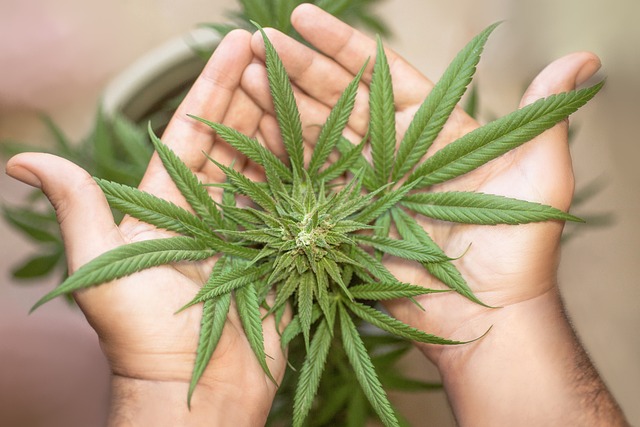The discussion focuses on THCA flower, a non-psychoactive cannabinoid from raw cannabis plants that exhibits significant potential for alleviating nausea. Unlike its psychoactive form THC, THCA does not induce mind-altering effects but interacts with the endocannabinoid system by binding to CB1 and CB2 receptors, which can help control nausea. Its anti-nausea effects are also linked to its engagement with serotonin receptors in the brain. The presence of terpenes like myrcene, limonene, and caryophyllene may further enhance these benefits. Users have reported substantial relief from nausea using THCA flower. For those interested in exploring this natural alternative or supplement to conventional antiemetic medications, it is crucial to start with a low dose and monitor responses. Consultation with healthcare professionals is recommended to ensure safe and effective use, especially when managing other health conditions or taking additional medications. Further research is needed to fully understand the mechanisms behind THCA's anti-nausea effects, which could contribute to its role in pharmacological treatment options for nausea management.
Explore the promising anti-nausea properties of THCA flower, a non-psychoactive compound with significant therapeutic potential. Our comprehensive article delves into the science behind its effectiveness and provides guidance on optimal dosage for nausea relief. Understand the critical role of decarboxylation in unlocking its healing benefits and discover practical tips for incorporating THCA flower into your wellness routine. Dive into the world of natural remedies with ‘THCA Flower Anti-Nausea Effects’—your guide to harnessing this botanical wonder’s power against nausea.
- Unveiling THCA Flower's Anti-Nausea Properties: A Deep Dive into the Science
- Optimal THCA Flower Dosage and Usage for Nausea Relief
- The Role of Decarboxylation in Activating THCA Flower's Healing Potential
- Integrating THCA Flower into Your Anti-Nausea Regimen: Tips and Best Practices
Unveiling THCA Flower's Anti-Nausea Properties: A Deep Dive into the Science

Delta-9-tetrahydrocannabinol acid (THCA) is a non-psychoactive cannabinoid found in the raw cannabis plant, which, when heated, converts to the more well-known psychoactive compound delta-9-THC. THCA flower, rich in this cannabinoid, has garnered attention for its potential health benefits, among them being its anti-nausea effects. Recent scientific studies have shown that THCA interacts with the body’s endocannabinoid system through its affinity for both CB1 and CB2 receptors, which are involved in regulating nausea and vomiting. This interaction may help alleviate symptoms in those undergoing chemotherapy or suffering from other conditions that cause nausea. The anti-emetic properties of THCA are thought to stem from its ability to influence the serotonin receptors in the brain, which play a crucial role in controlling nausea and vomiting. Additionally, the flower’s terpene profile, which includes myrcene, limonene, and caryophyllene, among others, contributes to its therapeutic effects by enhancing the anti-nausea actions of THCA. Users often report a sense of relief from nausea when using THCA flower, suggesting that this natural remedy could serve as an alternative or adjunct to traditional medications for managing these symptoms. The exact mechanisms behind THCA’s anti-nausea effects are still being researched, but the potential for this cannabinoid to provide relief without psychoactive side effects makes it a promising area of study in the field of pharmacology.
Optimal THCA Flower Dosage and Usage for Nausea Relief

THCA, or tetrahydrocannabinolic acid, is a non-psychoactive cannabinoid found in hemp and cannabis plants that has been recognized for its potential anti-nausea effects. When exposed to heat or UV light, THCA converts into THC, the primary psychoactive component of cannabis. For individuals seeking relief from nausea without the psychoactive effects, THCA flower is a promising option.
The optimal dosage for THCA flower for anti-nausea effects can vary depending on various factors, including body chemistry, tolerance, and the severity of symptoms. Generally, it’s advisable to start with a low dose to gauge individual sensitivity and gradually increase as needed. A common starting point is 1-2 milligrams of THCA per 10 pounds of body weight, divided into several doses throughout the day. Users should monitor their response and adjust their intake accordingly, aiming for relief without overconsumption. It’s crucial to approach THCA flower usage with caution and to consult with a healthcare professional before incorporating it into a treatment regimen, especially if other medications are being taken or if there are underlying health conditions. The anti-nausea effects of THCA flower are attributed to its interaction with the endocannabinoid system, which plays a role in regulating nausea and vomiting. Users often report relief from nausea after inhaling THCA flower; however, individual experiences may vary, and it’s essential to use this natural remedy responsibly and within legal boundaries.
The Role of Decarboxylation in Activating THCA Flower's Healing Potential

THCA flower, or tetrahydrocannabinolic acid, is a non-psychoactive cannabinoid found in raw cannabis plants that has garnered attention for its potential therapeutic benefits, including its anti-nausea effects. While THCA on its own does not produce the psychoactive effects associated with THC, it holds promise for various health conditions. A critical step in unlocking the healing potential of THCA flower is decarboxylation, a chemical process that converts THCA into THC through the application of heat. This transformation is essential as it activates the cannabinoid’s ability to interact with the body’s endocannabinoid system, thereby enhancing its effects. The process of decarboxylation typically occurs when cannabis is smoked, vaporized, or heated in an oven, leading to the formation of THC, which is then capable of providing the well-documented anti-nausea benefits that can significantly aid individuals undergoing chemotherapy and other treatments where nausea is a concern. Understanding and properly executing decarboxylation is key for those looking to harness the full therapeutic potential of THCA flower. It is a delicate but crucial step in cannabis preparation, ensuring that the desired effects are achieved once consumed.
Integrating THCA Flower into Your Anti-Nausea Regimen: Tips and Best Practices

When exploring natural remedies for nausea, THCA flower has emerged as a potential alternative due to its anti-nausea effects. Tetrahydrocannabinolic acid (THCA), the raw form of THC found in cannabis, is known for its therapeutic properties. To effectively integrate THCA flower into an anti-nausea regimen, it’s crucial to understand proper dosing and method of administration. Begin by starting with a low dose to gauge your body’s response; this allows you to monitor how THCA affects your nausea symptoms without overwhelming your system.
For those considering THCA flower for its anti-nausea effects, it’s important to focus on quality products from reputable sources to ensure safety and efficacy. Consistency in consumption also plays a role; regular dosing at the same time each day can help maintain optimal levels in your system for sustained relief. Additionally, pairing THCA flower with other nausea-reducing strategies, such as hydration, rest, and balanced nutrition, can enhance its effectiveness. Always consult with a healthcare professional before introducing THCA or any new treatment into your health regimen to ensure it aligns with your individual health needs and does not interfere with other medications or conditions.
THCA flower has emerged as a promising natural remedy for alleviating nausea, with its anti-nausea effects rooted in scientific research. Understanding the optimal dosage and proper usage, alongside the necessity of decarboxylation to unlock its healing potential, is crucial for effectively integrating THCA flower into your wellness practices. By adhering to the tips and best practices outlined, individuals can harness the full scope of THCA flower’s anti-nausea benefits. As this exploration of THCA flower makes clear, this botanical option holds significant promise for those seeking natural solutions to nausea, warranting further investigation and consideration in medical and holistic health circles alike.
